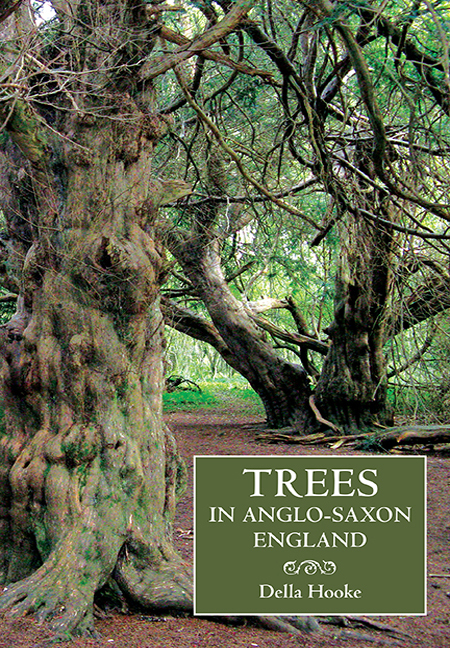Book contents
- Frontmatter
- Contents
- List of Illustrations and Tables
- Preface and Acknowledgements
- List of Abbreviations
- PART I Tree Symbolism
- PART II Trees and Woodland in the Anglo-Saxon Landscape
- Chapter 5 The Nature and Distribution of Anglo-Saxon Woodland
- Chapter 6 The Use of Anglo-Saxon Woodland: Place-Name and Charter Evidence
- Chapter 7 Trees in the Landscape
- PART III Individual Tree Species in Anglo-Saxon England
- Epilogue
- Bibliography
- Index
- Anglo-Saxon Studies
Chapter 5 - The Nature and Distribution of Anglo-Saxon Woodland
from PART II - Trees and Woodland in the Anglo-Saxon Landscape
Published online by Cambridge University Press: 09 May 2017
- Frontmatter
- Contents
- List of Illustrations and Tables
- Preface and Acknowledgements
- List of Abbreviations
- PART I Tree Symbolism
- PART II Trees and Woodland in the Anglo-Saxon Landscape
- Chapter 5 The Nature and Distribution of Anglo-Saxon Woodland
- Chapter 6 The Use of Anglo-Saxon Woodland: Place-Name and Charter Evidence
- Chapter 7 Trees in the Landscape
- PART III Individual Tree Species in Anglo-Saxon England
- Epilogue
- Bibliography
- Index
- Anglo-Saxon Studies
Summary
An unbroken cover of dense woodland waiting to be cleared and broken up by enterprising Anglo-Saxon colonists owes more to cinematic images of the American frontier than to reality; such a scenario is unlikely to have existed much longer than the early Holocene. Scholars like Vera and Rackham argue that the wildwood always consisted of an open woodland cover or even a park-like landscape, browsed heavily by herbivores. In temperate regions dense woodland will not form unless animals – both wild and domestic stock – are deliberately excluded. Even before prehistoric farmers cut down trees to obtain land for agriculture, or allowed their animals to browse the woodland, mesolithic man was clearing and burning swathes of land to create open spaces which would attract the animals he wished to hunt. The open nature of the resulting woodland may explain why so much of it disappeared so quickly in the prehistoric period.
One outstanding problem concerns the date at which woodland cover was augmented. Most prehistorians argue that any English ‘wildwood’ had been removed by the late Bronze Age and that the amount of woodland then present was little greater than that found today. Although it was once claimed that woodland took over abandoned farmland once the Romans left, many environmentalists now believe that in most areas of at least southern and midland England there was relatively little regeneration of secondary woodland until very much later. A period of regeneration seems to have occurred in later Anglo-Saxon times when woodlands became an increasingly valued habitat for hunting. Woodland regeneration can be encouraged by a number of factors and is seldom straightforward: it can increase when farming becomes neglected in periods of natural stress or war; it can be deliberately fostered along tribal frontiers, either because these were felt to be areas insecure for farming or as a deliberate policy; it can express a recognition of the economic or cultural benefits of woodland for its own sake. Woodland has generally only been conserved when it has been considered of value, but the factors influencing this can be economic, cultural or a mixture of the two.
- Type
- Chapter
- Information
- Trees in Anglo-Saxon EnglandLiterature, Lore and Landscape, pp. 113 - 137Publisher: Boydell & BrewerPrint publication year: 2011

